
The Ichneumonidae, also known as ichneumon wasps, ichneumonid wasps, ichneumonids, or Darwin wasps, are a family of parasitoid wasps of the insect order Hymenoptera. They are one of the most diverse groups within the Hymenoptera with roughly 25,000 species described as of 2016. However, this likely represents less than a quarter of their true richness as reliable estimates are lacking, along with much of the most basic knowledge about their ecology, distribution, and evolution. It is estimated that there are more species in this family than there are species of birds and mammals combined. Ichneumonid wasps, with very few exceptions, attack the immature stages of holometabolous insects and spiders, eventually killing their hosts. They thus fulfill an important role as regulators of insect populations, both in natural and semi-natural systems, making them promising agents for biological control.

The Gelechiidae are a family of moths commonly referred to as twirler moths or gelechiid moths. They are the namesake family of the huge and little-studied superfamily Gelechioidea, and the family's taxonomy has been subject to considerable dispute. These are generally very small moths with narrow, fringed wings. The larvae of most species feed internally on various parts of their host plants, sometimes causing galls. Douglas-fir (Pseudotsuga) is a host plant common to many species of the family, particularly of the genus Chionodes, which as a result is more diverse in North America than usual for Gelechioidea.

Cryptinae is a subfamily of wasps in the family Ichneumonidae. The family has also been called Gelinae, Hemitelinae, and Phygadeuontinae by various authorities, though the Phygadeuontinae have since been elevated to a separate subfamily.
Signiphoridae is a small family of parasitic wasps in the superfamily Chalcidoidea. The roughly 80 species are placed in four genera.
The Cosmopterigidae are a family of insects in the order Lepidoptera. These are small moths with narrow wings whose tiny larvae feed internally on the leaves, seeds and stems of their host plants. About 1500 species are described. The taxonomic family is most diverse in the Australian and Pacific region with about 780 species.

Banchinae is a subfamily of ichneumonid parasitoid wasps containing about 1,500 species; the genera Glypta and Lissonota are very large. The three tribes are all distributed worldwide.

Ctenopelmatinae is a cosmopolitan subfamily of ichneumonid parasitoid wasps.
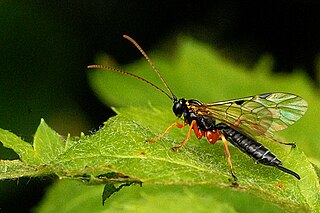
Pimplinae are a worldwide subfamily of the parasitic wasp family Ichneumonidae.
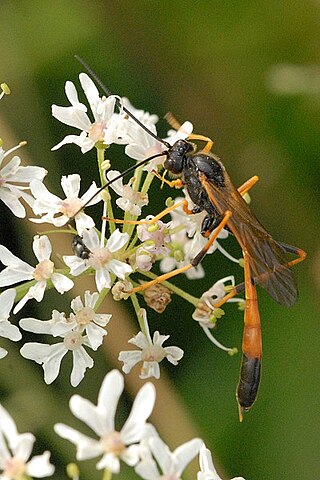
Anomaloninae is a subfamily of parasitoid wasps in the family Ichneumonidae. Several species provide beneficial services to humans by attacking forest or orchard pests.
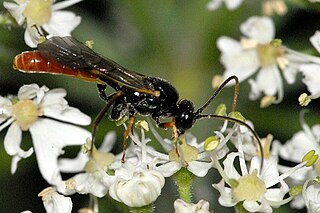
The Tryphoninae comprise a worldwide subfamily of the parasitic wasp family Ichneumonidae.

Campopleginae is a large subfamily of the parasitoid wasp family Ichneumonidae with a world-wide distribution. Species in this subfamily have been used in the biological control of the alfalfa weevil, clover weevil, various species of Heliothis, oriental army worm, European corn borer, larch sawfly, and others.

Eucerotinae is a worldwide subfamily of the parasitic wasp family Ichneumonidae with two genera, Euceros and Barronia.
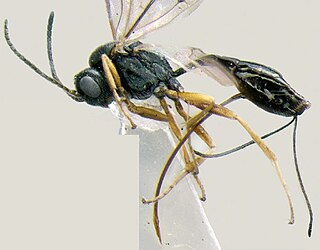
Tersilochinae is a worldwide subfamily of the parasitic wasp family Ichneumonidae.

The Labeninae is a subfamily within the parasitoid wasp family Ichneumonidae. The family is divided into 12 extant genera grouped within four tribes.
Phrudinae was formerly a subfamily of the wasp family Ichneumonidae. As a result of recent research, Phrudinae is no longer accepted as a valid subfamily, and its member genera have been moved to the subfamilies Brachycyrtinae and Tersilochinae.
Areyonga is a genus of the parasitic wasp family Ichneumonidae. It currently consists of only one species, Areyonga eremica, from Australia.
Westwoodia is a genus of parasitoid wasps in the subfamily Ctenopelmatinae. A neotropical genus of butterflies was known as Westwoodia but is now referred to as Xenandra.
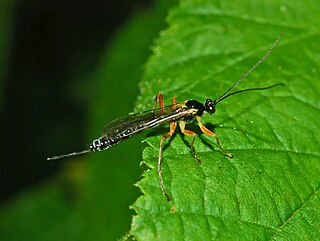
Polysphincta is a genus belonging to the family Ichneumonidae subfamily Pimplinae.
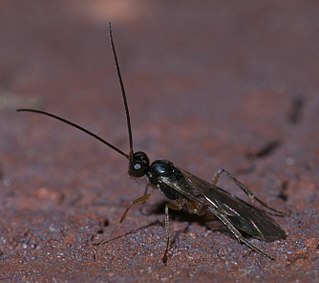
Phygadeuontini is a tribe of ichneumon wasps in the family Ichneumonidae. It is the only tribe in the subfamily Phygadeuontinae. There are about 123 genera in 12 subtribes worldwide.

Gravenhorstiini is a large tribe of parasitoid wasps belonging to the family Ichneumonidae It contains all the genera of the subfamily Anomaloninae, excepting Anomalon.














